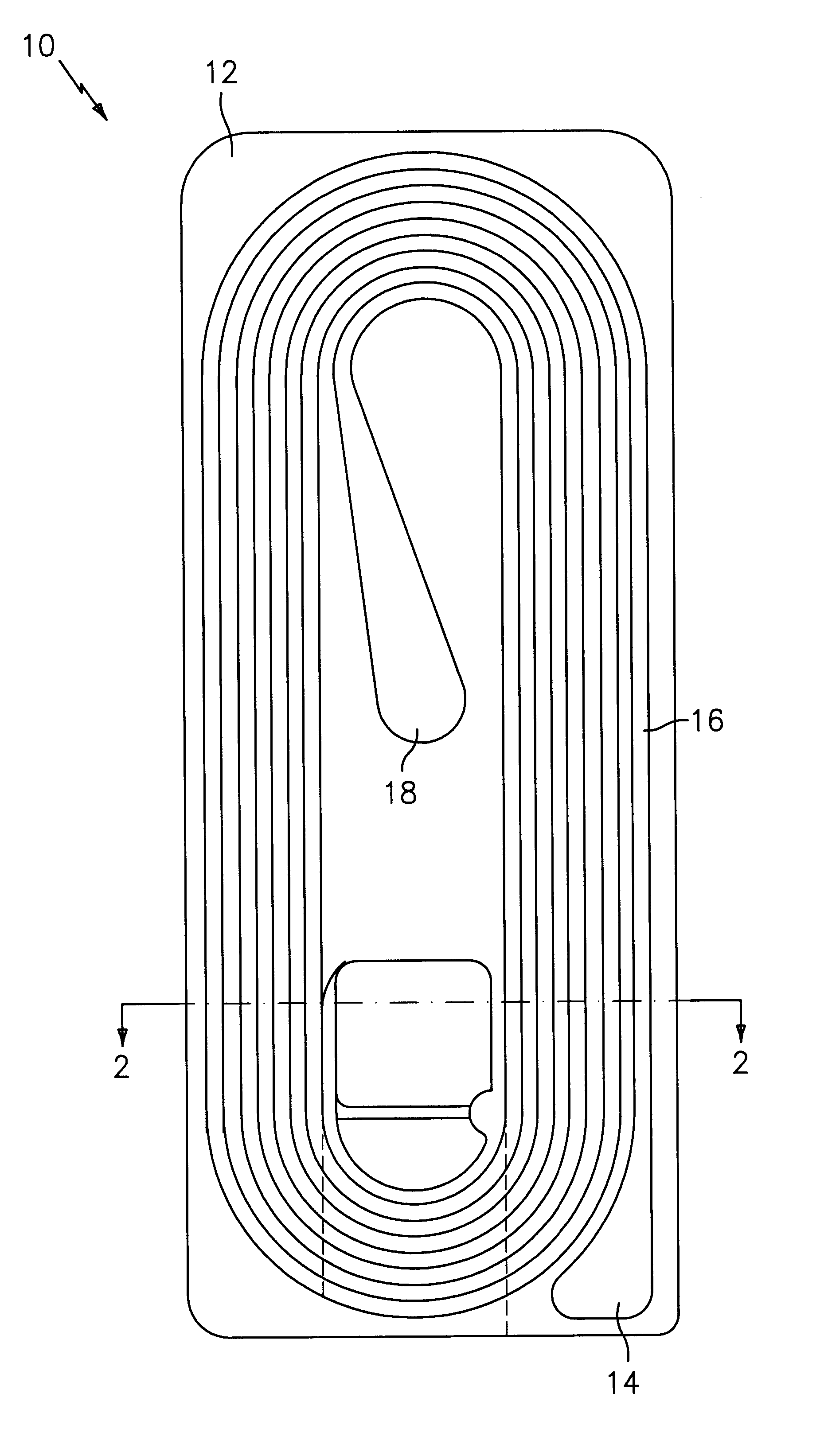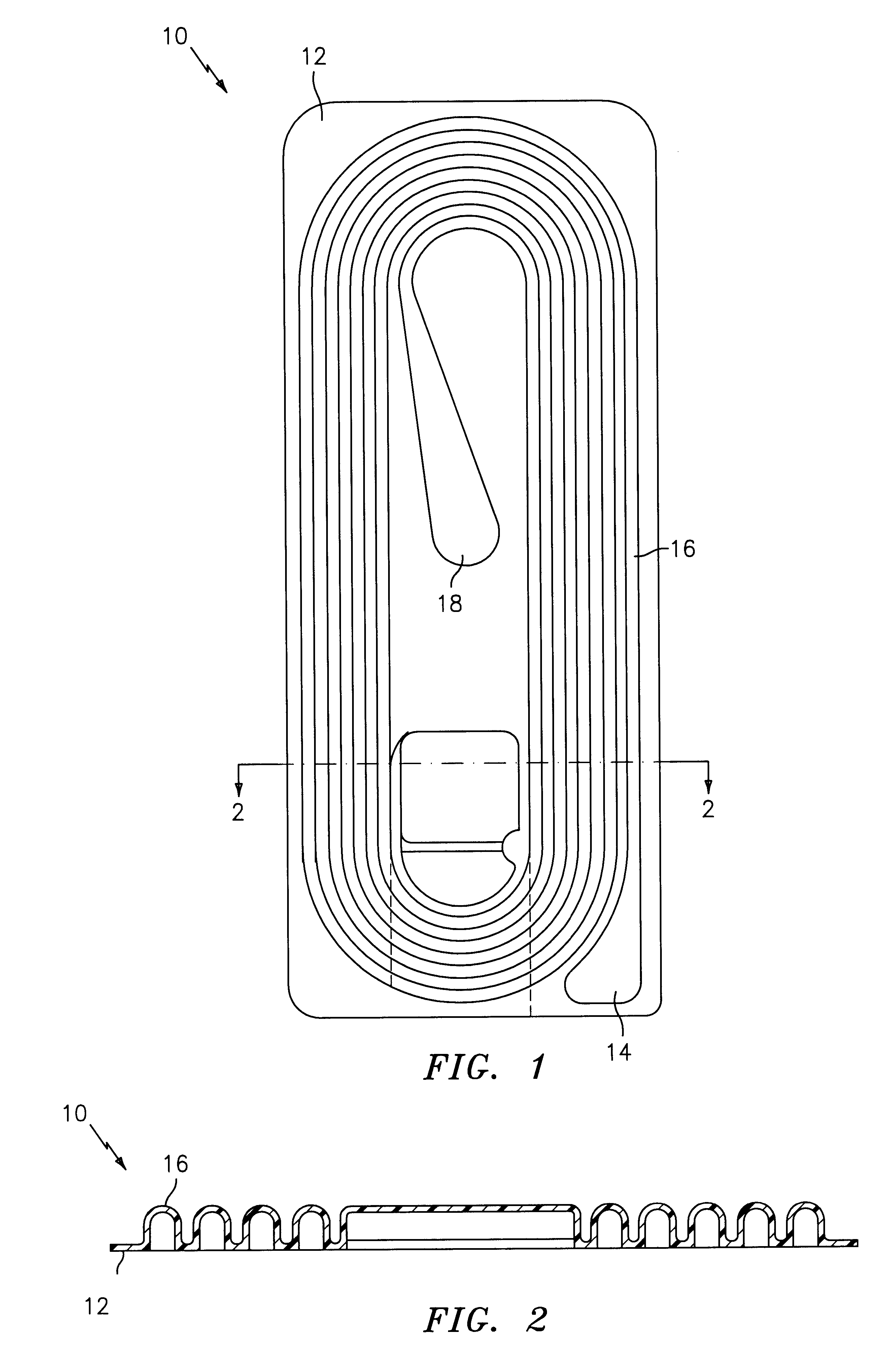Packaged synthetic absorbable surgical elements
a technology of surgical elements and synthetic absorbable elements, which is applied in the directions of biocide, transportation and packaging, prosthesis, etc., can solve the problems of high undesirable effects, introduce undesirable kinks and bends in the suture, and relatively stiff and inflexible synthetic absorbable sutures packaged under very dry conditions, so as to improve the flexibility and hand of synthetic absorbable sutures, improve the out of package handling characteristics
- Summary
- Abstract
- Description
- Claims
- Application Information
AI Technical Summary
Benefits of technology
Problems solved by technology
Method used
Image
Examples
example 2
Samples of calcium lactate / glycerol--filled braided sutures show equally improved stability to storage compared to glycerol filled braid without calcium lactate as shown in Table IV (Compare C and D to A and E). In both cases, the stability is excellent compared to braid without glycerol and equilibrated at about the same moisture level.
The following examples demonstrate the properties, characteristics and advantages of filled braided synthetic absorbable sutures packaged in accordance with the invention. All moisture analyses were performed on a Mitsubishi Moisture Meter Model CA-05 with a water vaporizer Model VA-05 attachment and a transfer time of no more than five seconds.
example 3
Braided Size 0 sutures composed of 90 percent mol weight glycolide and 10 percent mol weight lactide were prepared in thirty inch lengths and attached to needles by swaging. One set of sutures were filled with 10% glycerol and 1.2% calcium lactate by weight of the suture, and coated with the copolymerization product of polyalkylene glycol and a copolymer of 18% glycolide, 82% lactide. A second set of sutures were not filled or coated. All sutures were inserted by vacuum draw into the preferred molded retainers shown in FIGS. 1-3 constructed as described above of molded PETG with a TYVEK cover sheet adhered thereto with Oliver 18B hot melt adhesive. One half of each set of sutures was sterilized in an ethylene gas sterilization cycle and aerated to remove ethylene oxide residuals. The sterilized filled samples were equilibrated in an environment having a dew point of about -10.degree. C. Each retainer was mounted in the vise of an Instron tester. Using a crosshead speed of 10 inches ...
example 4
Thirty inch lengths of size 3 / 0 braided sutures were prepared. One set of sutures was filled with 11.3% glycerol and coated with 2.9% of the coating described in Example 3, both by weight of the suture. A second set of sutures was filled with 1.9% calcium lactate and 11.2% glycerol and coated with 2.8% coating, all by weight of the suture. Equal numbers of samples were inserted into the retainers of Example 3 and equilibrated under different moisture conditions and sealed in foil laminate envelopes. The Group A samples were equilibrated to about 10.degree. C. dew point. The Group B samples were equilibrated in the range of about -10.degree. to -8.degree. C. dew point, and the Group C samples were equilibrated to a range of about -14.degree. to -12.degree. C. dew point. The Group B samples filled with glycerol had a measured moisture content of about 0.58% by weight of the suture. The Group C samples filled with glycerol and calcium lactate had a moisture content of about 0.55%. The ...
PUM
| Property | Measurement | Unit |
|---|---|---|
| temperature | aaaaa | aaaaa |
| length | aaaaa | aaaaa |
| width | aaaaa | aaaaa |
Abstract
Description
Claims
Application Information
 Login to View More
Login to View More - R&D
- Intellectual Property
- Life Sciences
- Materials
- Tech Scout
- Unparalleled Data Quality
- Higher Quality Content
- 60% Fewer Hallucinations
Browse by: Latest US Patents, China's latest patents, Technical Efficacy Thesaurus, Application Domain, Technology Topic, Popular Technical Reports.
© 2025 PatSnap. All rights reserved.Legal|Privacy policy|Modern Slavery Act Transparency Statement|Sitemap|About US| Contact US: help@patsnap.com



